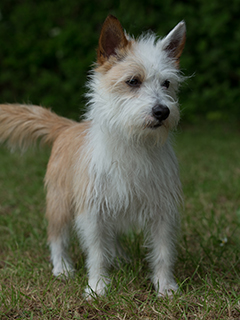

Podengos are primarily a pack breed, used to hunt rabbits in their homeland of Portugal. He resembles the Pharaoh Hound, Ibizan Hound, and Cirneco dell Etna, and it is likely that all of these breeds share the same ancestry. The Podengo is alert and should make a good watchdog.The Portuguese Podengo is a sighthound that comes in three sizes: Grande, Medio, and Pequeno. Invest in a tall fence if you get one of these dogs.

He likes to hunt rabbits and other furry critters and can jump straight up, very high. He comes in three sizes and two coat types (smooth and wire). breeders.html Rescue OrganizationsĪkc.org/dog-breeds/rescue-network/contacts/ Books about the Portuguese Podengo PequenoĪmazon.This Portuguese sighthound is lively, active, funny, and smart. Search for a BreederĪkc.org/classified/search/landing_breed.cfm Useful Links AKC ® Portuguese Podengo Pequeno Breed Standard Longevity: Long-lived (15 or more years).Novice Owner: Suitable for novice owners.

Outdoor Space: Best with at least an average-sized yard.Apartments: Good in an apartment if sufficiently exercised.Jogging: A fairly good jogging companion, though small.Trimming & Stripping: No trimming or stripping needed.Combativeness: Can be a bit dog-aggressive.Other Pets: Generally good with other pets.Dominance: Moderate (not particularly dominant or submissive).This breed does well with most owners, including novices. They are somewhat wary of strangers and will alert their owners to unfamiliar people and noises. This is a primitive breed, and the dogs tend to have acute senses of sight, scent, and hearing. They are very good with children and with other dogs and pets when raised with them. They are loyal and brave and make good watchdogs. The Portuguese Podengo Pequeno is a keen, active, enthusiastic little dog that is easy to train and easy to live with. They are excellent climbers and jumpers, so a high fence is needed in the yard. Legg Calves Perth, a degenerative condition of the hip joint, and luxating patella, a looseness in the stifle joint (knee), have occasionally been reported in the breed. The Pequeno is a very hardy, healthy breed with few health issues. Talents: Agility, obedience, lure coursing, watchdog, and companionship.The Portuguese Podengo Pequeno’s trot is light and agile, well suited to hunting for hours at a time over rough terrain. Coat color ranges from yellow to dark brown or black, although yellow and fawn are preferable. The coat can be either smooth (short and dense) or wire (rough, long, and harsh). The feet are oval with toes slightly arched. When raised, it should have a sickle shape. The tail should be strong and tapered with light feathering along the underside. The back is straight and long the belly is lean and slightly tucked up. The triangular ears should be set at the level of the eyes, and are carried upright or tilted forward when attentive. The eyes should be almond shaped, honey to dark brown in color, with a lively expression. The muzzle is pointed and the stop is barely defined. Small in stature and rectangular in shape, the Portuguese Podengo Pequeno has a wedge-shaped head and erect ears. The Pequeno was accepted into the AKC Hound Group as of January 1, 2013. In Europe, the dog comes in three sizes-small, medium, and large-but in the United States the breed has been split into the Portuguese Podengo Pequeno (small) and the Portuguese Podengo Medio/Grande (medium/large). It is also still a popular hunting dog due to its ability to locate prey via sight, sound, and smell.

The breed, which can have either a smooth or wire (rough) coat, excels in agility, obedience, and rally, as well as lure coursing. The first Portuguese Podengo Pequeno came to the United States in the 1990s as of 2011, there were several hundred of these dogs in this country, valued as both pets and athletes. Farmers in Portugal used the dog for hunting rabbits and small game, and they were bred to have tremendous endurance, be able to penetrate thickets, and hunt alone or in small packs. The breed can still be seen on eleventh-century churches in Portugal and in some literature dating back to the fourteenth century. The Portuguese Podengo Pequeno arrived on the Iberian Peninsula with the Phoenicians more than 2,000 years ago.


 0 kommentar(er)
0 kommentar(er)
